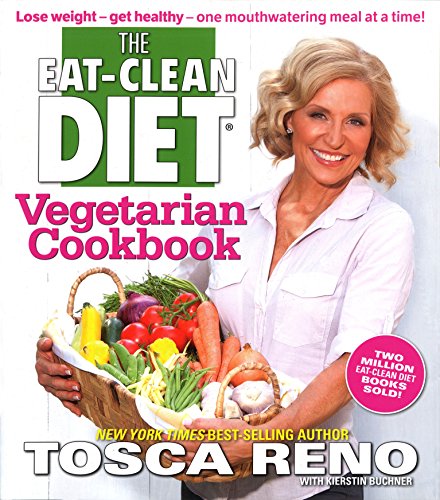
Vegetarians are a healthy way to eat whole grains, vegetables, fruits and other healthy foods. A vegetarian diet is lower in saturated fat than meat, poultry, fish, and other animal products. Additionally, a heart-healthy diet that includes vegetarians has very low levels of trans-fats. Nuts are another great source of protein and heart-healthy fats. Almonds, walnuts, and hazelnuts are all good choices. Avoid cashews or pecans though, as they have higher levels of saturated fat and lower protein.
If you choose to be a healthy vegetarian, you should reduce the amount you eat. Limiting your daily intake of fat should not exceed 1600 calories per person. It is important to track your calories, especially saturated fats, for a week to make sure that you are eating enough and staying within these limits. In addition to these two main nutrients, a heart-healthy vegetarian diet also limits your consumption of processed food, including packaged or processed foods.

While the heart-healthy vegetarian diet is low in saturated fat and cholesterol, it is still necessary to eat plenty of whole grains. This keeps you fuller and away from excess fat. Additionally, it helps lower blood pressure and is high in fiber. You can find a vegan diet that contains oats, brown rice, and quinoa. A healthy diet must include good fats. You should limit your intake to about 1 ounce of seeds and nuts per day.
Vegetables, fruits, and whole grains are all important for heart health. These foods are high in fiber, which can lower cholesterol levels. You can lower your risk of developing heart disease by including fiber in your diet. A vegetarian diet has more heart-healthy benefits than a meat-based one. The fiber in plant foods can help prevent colon and digestive cancers. Trans fats are best avoided.
Low-saturated and high-fiber foods are good for your heart. Unsaturated fats can be good for your heart and lower cholesterol. A lower level of cholesterol is associated with a reduced risk of developing heart disease. These foods can help lower the risk of obesity. While the heart-healthy diet of vegetarians is lower in saturated fat, it has less calories and protein than a meat-based meal.

Vegetarian diets are low in saturated fat, high in fiber and good for your heart. Studies show that vegetarian diets lower total cholesterol, as well as LDL cholesterol. It can also lower blood pressure, which is an indicator of heart disease risk. Further, a vegetarian diet may reduce cancer risks. The author has dealt with many patients suffering from dramatic weight loss. In addition to the recipes, the book contains tips for healthy cooking and shopping for plant-based foods.
FAQ
What is the difference of fat and sugar?
Fat is an energy source that comes from food. Sugar is naturally found in fruits and veggies. Both fats and sugars provide the same number of calories. Fats have twice the calories of sugars, however.
Fats are stored in your body and can cause obesity. They can lead to cholesterol buildup in the arteries, which could cause heart attacks or strokes.
Sugars can be quickly absorbed by your body and give you instant energy. This causes blood glucose to rise. High blood glucose levels are dangerous as it can increase the likelihood of developing type 2 diabetes.
What are the 10 most delicious foods?
These are the 10 best foods to try:
-
Avocados
-
Berries
-
Broccoli
-
Cauliflower
-
Eggs
-
Fish
-
Grains
-
Nuts
-
Oats
-
Salmon
How often do I need to exercise?
For a healthy lifestyle, exercise is vital. However, there isn't a set amount of time you must spend working out. Finding something that you love and sticking with it is the key.
You should aim to do 20-30 minutes of moderate intensity exercise three times per week. Moderate intensity means that you will still be working hard even after your workout is over. This type workout burns about 300 calories.
Walking is a great option if you are a keen walker. You can do 10-minute walks four days per week. Walking is low in impact and easy for your joints.
Jogging three times a week for 15 mins is enough if you want to run. Running is an excellent way to lose weight and tone your muscles.
If you're not used to exercising, start slowly. Start by doing 5 minutes of cardio each day, a few times per week. Gradually increase the duration until you reach your goal.
What should I eat?
Eat lots of fruits and vegetables. These vegetables and fruits are rich in vitamins and minerals that will keep your immune system strong. Also, fruits and vegetables are rich in fiber. This makes them filling as well as helping with digestion. At least five servings of fruits and vegetables should be consumed each day.
You should also drink lots of water. Water flushes toxins out of the body and helps to feel full between meals. Drink about eight glasses each day.
Eat whole grains instead of refined ones. Whole grains have all the nutrients they need, including B vitamins. Refined grains are stripped of some of their nutritional value.
Avoid sugary drinks. Sugary drinks have empty calories and are a major contributor to obesity. Instead, choose water, milk, and unsweetened tea.
Avoid fast food. Fast food has little nutritional value. While it might taste good, it won't give your body the energy it needs to function properly. Instead, stick to healthier options such salads and soups as well sandwiches and pasta.
Try to limit alcohol intake. Alcohol can lead to poor nutrition and empty calories. Limit your consumption to no more than 2 alcoholic beverages per week
Try to cut down on red meat. Red meats contain high amounts of saturated fats and cholesterol. Opt for lean cuts of beef, pork, lamb, chicken, fish, and turkey instead.
How does an anti-biotic work?
Antibiotics are drugs which destroy harmful bacteria. Antibiotics can be used to treat bacterial infection. There are many types and brands of antibiotics. Some can be taken orally while others are injected. Others are topically applied.
Antibiotics are often prescribed to people who have been exposed to certain germs. If someone has chicken pox, they might need to take an oral antibiotic in order to prevent shingles. Or, if someone has had strep throat, he or she might receive an injection of penicillin to help prevent pneumonia.
When antibiotics are given to children, they should be given by a doctor. Children are at greater risk of developing side effects from antibiotics than adults.
Diarrhea being the most common side effect of antibiotics. Other side effects possible include dizziness, nausea, vomiting, stomach cramps, dizziness and allergic reactions. Most of these symptoms disappear after the treatment is completed.
What is the difference in a virus and bacteria?
A virus is a microscopic organism that cannot reproduce outside its host cell. A bacterium is a single-celled organism that reproduces by splitting itself in two. Viruses measure only 20 nanometers in diameter, but bacteria is up to 1 millimeter in size.
Viruses are usually spread through contact with infected bodily fluids, including saliva, urine, semen, vaginal secretions, pus, and feces. Bacteria can easily be spread from direct contact to contaminated surfaces and objects.
Viral infections can also be introduced to our bodies by a variety of cuts, scrapes or bites. They may also get into the body through the nose and mouth, eyes, ears or rectum.
Bacteria can enter the body through wounds. They can also get into our bodies via food, water or soil.
Both bacteria as well as viruses can cause illness. But viruses can't multiply within their hosts. They infect only living cells, causing illness.
Bacteria can spread within the host and cause illness. They can even invade other parts of the body. To kill them, we must use antibiotics.
How do I count calories?
You might wonder, "What's the best diet for me?" or "is counting calories necessary?" Well, the answer depends on several factors including your current health status, your personal goals, your preferences, and your overall lifestyle.
The Best Diet for Me - Which One is Right For You?
The best diet depends on me, my health, my goals, my preferences and my overall lifestyle. There are many diets available, some good and others not so good. Some diets work for some people, while others are not. What should I do then? How can I make the best decision?
These questions are addressed in this article. It begins with an overview of the different diets today. Next, we'll discuss the pros and cons for each type of diet. Then, we will discuss which diet is the best.
Let's start by taking a look at the various types of diets.
Diet Types
There are three main types of diets: low fat, high protein, and ketogenic. Let's discuss them briefly below.
Low Fat Diets
A low fat diet is a diet that restricts the amount of fats consumed. This is done through reducing the intake of saturated fats (butter, cream cheese, etc.) These fats can be replaced with unsaturated fats like avocados and olive oil. Low fat diets are often recommended to those who wish to lose weight quickly. However, this kind of diet may cause problems such as constipation, heartburn, and indigestion. Vitamin deficiencies can also occur if the person doesn't get enough vitamins through their diet.
High Protein Diets
High protein diets reduce carbohydrates to favor of proteins. These diets are more protein-rich than others. They are meant to help build muscle mass and burn more calories. Unfortunately, they can't provide adequate nutrition for those who eat regularly. They may also be too restrictive and not suitable for everyone.
Ketogenic Diets
Ketogenic diets also go by the name keto diets. They are high fat and moderately carbohydrate and protein-rich. They are commonly used by athletes and bodybuilders, as they allow them train harder and more frequently without getting tired. They do require strict compliance to avoid any side effects like fatigue, headaches, nausea, and headaches.
Statistics
- According to the 2020 Dietary Guidelines for Americans, a balanced diet high in fruits and vegetables, lean protein, low-fat dairy and whole grains is needed for optimal energy. (mayoclinichealthsystem.org)
- WHO recommends consuming less than 5% of total energy intake for additional health benefits. (who.int)
- WHO recommends reducing saturated fats to less than 10% of total energy intake; reducing trans-fats to less than 1% of total energy intake; and replacing both saturated fats and trans-fats to unsaturated fats. (who.int)
- This article received 11 testimonials and 86% of readers who voted found it helpful, earning it our reader-approved status. (wikihow.com)
External Links
How To
How to keep motivated to eat healthy and exercise
Tips for staying healthy and motivated
Motivational Tips To Stay Healthy
-
Write down your goals
-
Realistic goals
-
Be consistent
-
Reward yourself when your goal is achieved
-
Even if you make a mistake, don't quit!
-
Have fun!